Developments in the field of biomechanics
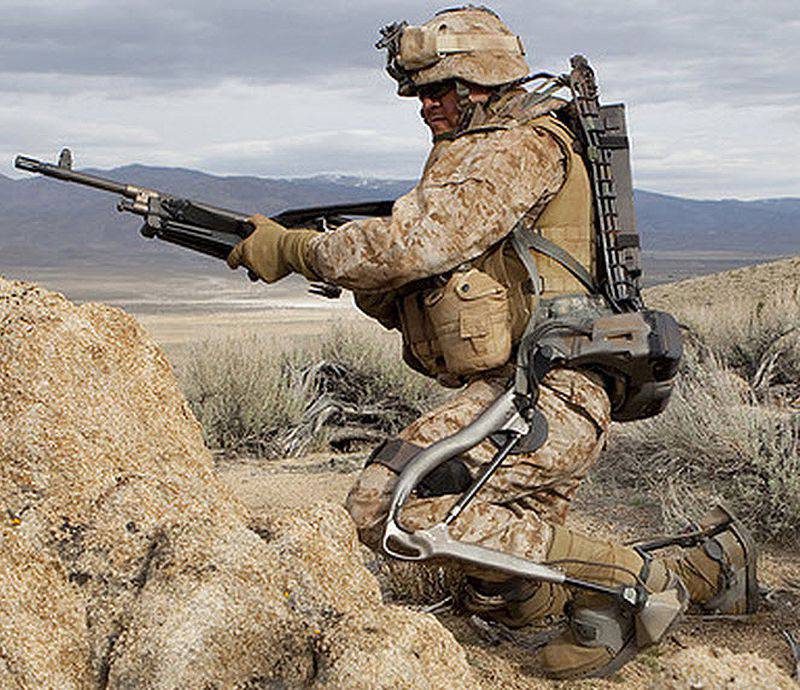
The HULC (Human Universal Load Carrying System) exoskeleton from Lockheed Martin was created for intensive use in all types of terrain. It reflects quite well the human biomechanics, which allows the owner to squat, crawl, walk and run without problems
When infantrymen carry loads, handle equipment and weapons, overcome difficult terrain, they demonstrate mobility, speed of execution and endurance in a combination that still cannot be surpassed by any vehicle. However, the pace with which soldiers are being demobilized for health reasons from the army as a result of musculoskeletal injuries indicate that the physical demands placed on their bodies are approaching and often exceed what they could withstand objectively. Therefore, today it is more important than ever to form a deep understanding of the biomechanics of the human body. Research around the world is being conducted that uses accumulated knowledge and experience in creating wearable systems that work with human biomechanics in order to reduce the risk of injury, increase productivity and mitigate damage resulting in disability.
Understanding the capabilities and limitations of the human body has played an important part in ergonomics and has made all types of vehicles and machines safer, easier and more efficient to work with, and as science and technology advance, this human-machine interface is becoming more and more friendly. The ultimate embodiment of this is the fusion of people and robots in new cyborg entities is one of the most popular topics in science fiction and is closer to scientific reality than one might think.
The reality of cyborgs
Among the research works in the field of biomechanics can be noted the famous innovative experiments with implants, conducted by Professor of Cybernetics Kevin Warwick from the University of Reading, who used himself as a guinea pig. In the Cyborg 1 project in 1998, the general practitioner implanted a radio transmitter with a length of 23 mm and a diameter of 3 mm (actually a radio frequency identification device RFID) in his left hand. This implantation was carried out for the first time. In a successful nine-day experiment at the command of the interrogator, the implant emitted a coded signal that was used to open doors, turn lights on and off, heaters, and computers.
As part of the Cyborg 2 project in 2002, a group of neurosurgeons at the Oxford hospital underwent a complex operation to implant surgically into the median nerve fibers of Professor Warwick's implant with a much more complex matrix of 100 electrodes. Developed by a team led by Dr. Mark Gasson, implant technology allowed Warwick to control an electric wheelchair and an “intelligent” artificial arm. The implant could measure the nerve signals in the hand and create an artificial feeling by stimulating the nerves with individual matrix electrodes. Professor Warwick's wife also agreed to take part in the experiment, and the same implant was implanted in her hand, which allowed the couple to demonstrate the bi-directional functionality of this technology.
While this work demonstrated the ability of the nervous system to control a mechanical device that mimics human biomechanics, another work showed how electrical implants can help overcome damage to the nervous system that was previously thought impossible to correct. Dr. Harkem from the University of Louisville showed how a relatively simple implant can restore movement despite the "full" damage to the spinal cord. Using only 16-contact epidurial (outside the dura mater) stimulator for pain relief, Dr. Harkem and her team regained sensitivity, movement and ability to stand in a man who was paralyzed five years below his chest after a motorcycle cross 16 years. With the stimulator turned on, Kent Stevenson could move his legs and ankles at his own discretion and stand on his own - abilities that improve with intensive practice. The implant stimulates the healthy nerves located lower in the spinal cord, rather than correcting or eliminating disorders of the spinal cord.
Spinal irritants
“We have known for many decades, almost a century, that in all other biological species, the spinal cord is a very complex system and actually controls all aspects of locomotion (a set of coordinated movements through which an object moves in space). But it was believed that when people evolved and we got our fantastic brain, he allegedly took over the entire control, says Dr. Harkem. - Therefore, my research really focused on whether the human spinal cord provides these qualities and found that it performs these functions. And it means for a person with spinal cord injuries that even if there is a complete and obvious “opening” with the brain, we can do a lot with what remains in the nervous system. ”
“It may turn out that all movements are controlled at the level of the spinal cord,” Dr. Harkema continues, arguing that the brain issues higher-level commands rather than controls all movements in detail and that very weak signals must pass through the damage or bypass it. “As we continue the process of training these people, the intensity of stimulation that we need decreases, so we believe that the nervous system adapts.”
While biomechanical and bioelectronic devices are becoming increasingly effective when using prosthetic limbs and implants that increase the physical abilities of people with disabilities, the potential of related and related technologies to improve human capabilities is explored with growing enthusiasm. The most exciting manifestation of this is the exoskeleton and their relatives exocostuits, which represent a relatively new area of “soft robotization”.
Rise of the Machines
Exoskeletons allow a person to lift and carry heavy loads, move faster and maintain performance with such loads that otherwise you can not just lift without help. Passive (or without a power source) exoskeletons allow the wearer to support heavy loads without tension, but do not impart any extra power. Lockheed Martin and Raytheon were very active in military exoskeleton technology. The first of these developed the HULC system (Human Universal Load Carrier - universal carrier construction for humans) with battery power, which was evaluated by the US Army for use in combat conditions. The second FORTIS system without power supply is intended for industrial use. A project to test the experimental concept of the Raytheon XOS 1 company resulted in a system for the whole body, which was designated XOS 2.
18 August 2014, Lockheed Martin announced it had received a contract from the National Center for Technological Science for the evaluation of two FORTIS exoskeletons by the Marine Corps. The main goal of these works is the development of technology and the organization of its transition to the industrial base of the Ministry of Defense, conducting tests and evaluating the use of this system when working with hand tools in American Navy shipyards.
The FORTIS passive exoskeleton consists of a rigid pelvic girdle that transfers large loads to the ground through articulated legs, which among other things allow the wearer to walk normally. A hinged arm fixed to the pelvic strap supports the weight of heavy hand tools, allowing the user to work with them for a long time with minimal fatigue. From the technical point of view, the spring-loaded arm hinges resemble those of the human arm, so that the wearer can move normally.
“Ship maintenance often requires heavy tools, such as grinding machines, riveting hammers or sandblasting machines,” said Adam Miller, head of the new directions at Lockheed Martin Missiles and Fire Control. These tools take a lot of power from operators because of their weight and the constrained conditions in which they sometimes have to work. When wearing the FORTIS exoskeleton, operators can work with heavy instruments for a long period of time, while their fatigue decreases significantly. "
FORTIS allows the owner to work while standing or kneeling, while the zeroG hand developed by the American company Equipois allows you to “effortlessly” manipulate tools or other items weighing up to 16,3 kg. The company Lockheed Martin declare a decrease in muscle fatigue by 300% and an increase in labor productivity from two to 27 times.
Revision has adapted its exoskeleton technology for use in the US command of TALOS (Tactical Assault Lightweight Operator Suit - a light kit for special forces) using special operations forces. Another PROWLER system was developed by Canadian firm B-tema and serves as an exoskeleton of the lower extremities.
Raytheon's XOS 2 exoskeleton is powered from an external source, so it is tied to a vehicle, but the company announced it is developing a lower body option that will already have its own battery.
Old idea, new technology
Work on active (with its own source of energy supply) exoskeletons for the military has been going on for over a decade. The first examples include collaboration between General Electric and the Office of the Naval Research to develop a device called HARDIMAN. This cooperation began in 1965 as a joint program of the army and fleet. Perhaps she was inspired by the costumes worn by the foot soldiers in Robert Heinlein's 1959 science-fiction novel Star Troopers. Designed for tasks such as loading weapons and other heavy work on board aircraft carriers, the HARDIMAN could lift loads weighing 680,3 kg; however, there was power feedback in order to allow the operator to feel what was happening. However, the HARDIMAN also weighed 600 kg and delays in its control system made it impractical.
Raytheon’s XOS 2 exoskeleton most closely resembles the HARDIMAN concept, in accordance with which it is intended for logistic work, but at the same time modern technologies make it significantly more practical. Its full-size configuration includes hands with hydraulic drives that allow the wearer to lift 90,7 kg several hundred times without feeling tired and repeatedly punch a three-inch board in a cyclical mode. Nevertheless, the company states that "it is so mobile and graceful that it allows its owner to play with a soccer ball, beat a punching bag or easily climb stairs and ramps." When Raytheon Sarcos exhibited the XOS 2 exoskeleton in September 2010, the company’s vice president said that with stable funding, they could be deployed for five years.
The HULC electro-hydraulic exoskeleton from Lockheed Martin has a power source and, accordingly, does not have a tethered cable, transferring the weight of the load up to 90,7 kg plus its own 24 kg to the ground through titanium legs. The biomechanical tests of the HULC exoskeleton were conducted on US Army soldiers at the Natik Research Center during 2011, the results of which were used to transition to what is described as a series of “field excursions in a simulated combat space”, which will make a conclusion about its usefulness.
As stated at Harvard University, "promising options for Soft Exosuit can help people with limited mobility"
Exoskeletons of the command of special operations forces and the Agency DARPA
Exoskeleton technology is part of the TALOS program, which is a work on combining lightweight and more effective ballistic protection of the whole body and strength “beyond human capabilities”. TALOS is the brainchild of Admiral William Macreyven, the commander of the special operations forces, TALOS is an accelerated development of a prototype that brings together many technologies from 56 corporations, 16 government agencies, 13 universities and 10 national laboratories. Three passive (loose) prototypes were to be delivered to command in June 2015 of the year, and system availability is expected by August 2018.
There were several specific details about the candidates for biomechanical technology, but one of the most interesting is the Soft Exosuit project, which is being developed as part of the DARPA Warrior Web program. The agency issued a Harvard University contract worth 2,9 million dollars for the further development of the Soft Exosuit exosuit that can be worn under clothing. It will allow soldiers to travel long distances, reduce fatigue and minimize the risk of injury when carrying heavy loads.
Previous work has allowed us to test the concept of what the university calls a radically new approach to designing and creating a “wearable robot” that is inspired by a deep understanding of human walking biomechanics. Soft Exosuit technology conditions the development of what the university describes as “entirely new forms of functional woven, flexible motor systems, soft sensors, and control strategies that allow an intuitive and seamless interaction between man and machine.”
“While the idea of a wearable robot is not new, our approach to its creation is definitely innovative,” says Connor Volsh, who heads the design team.
Imitating the work of muscles and tendons of the legs when walking, the suit also provides a small, but “carefully synchronized” help in the joints without any restriction of movements. One of the current prototypes is distinguished by several discharge straps around the lower body. These belts accommodate a low-power microprocessor and a network of flexible strain gauges that collectively monitor the position and movements of the wearer's body. However, unlike the solid exoskeleton, Soft Exosuit apparently does not transfer the load to the ground.
While the burdens borne by soldiers are unlikely to become lighter, an understanding of human biomechanics and new technologies associated with this will make their burden, including the one that causes injuries, lighter.
Materials used:
www.monch.com
www1.iwr.uni-heidelberg.de
www.lockheedmartin.com
www.raytheon.com
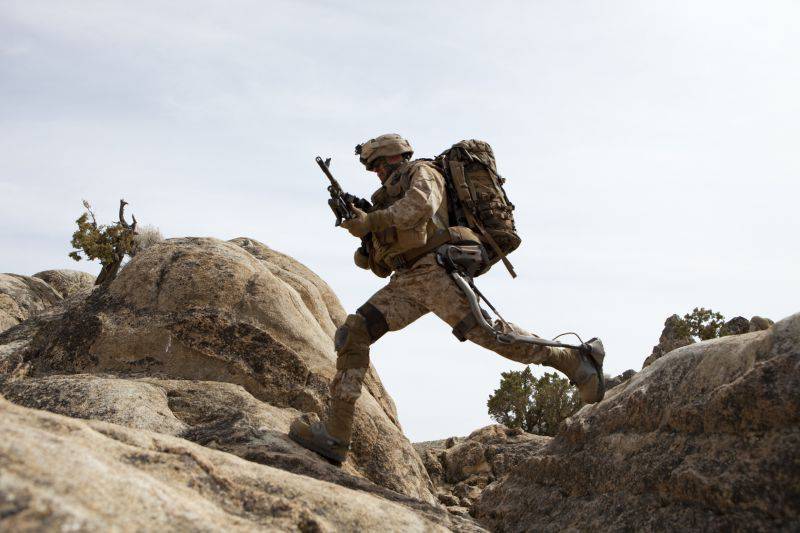
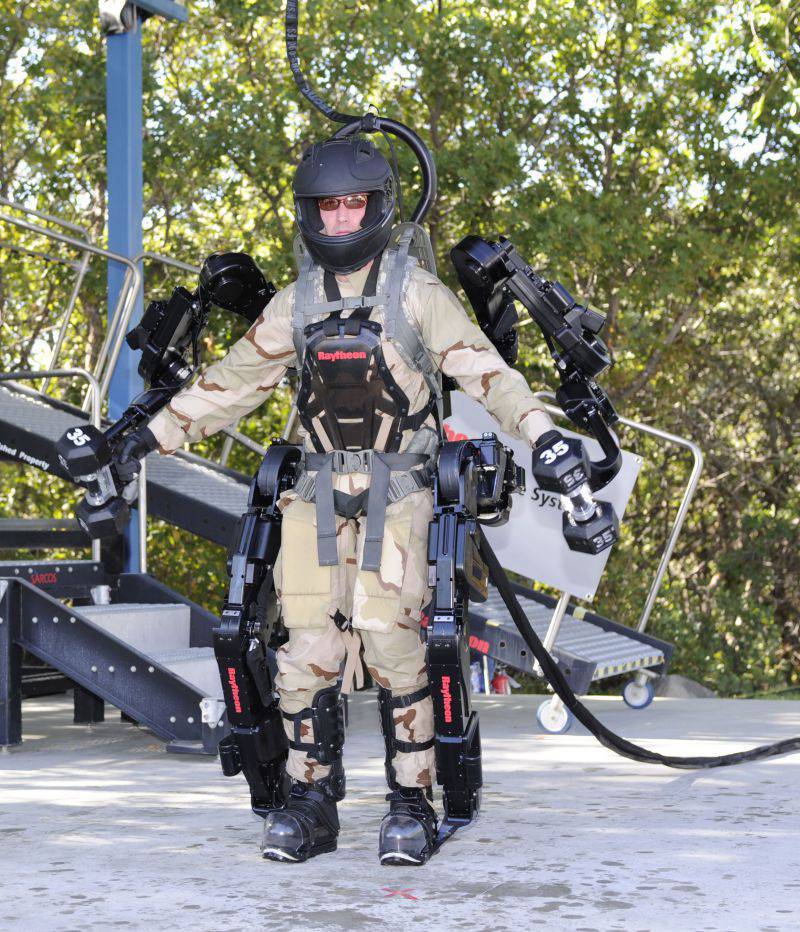
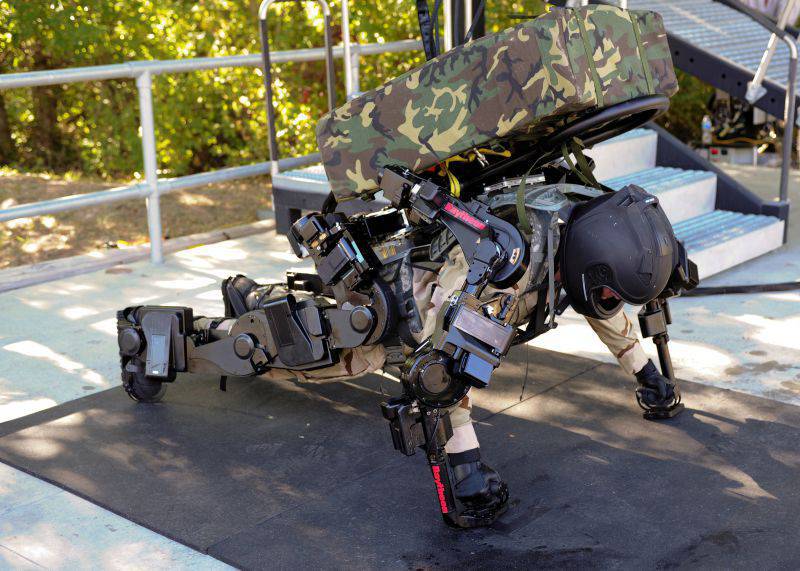
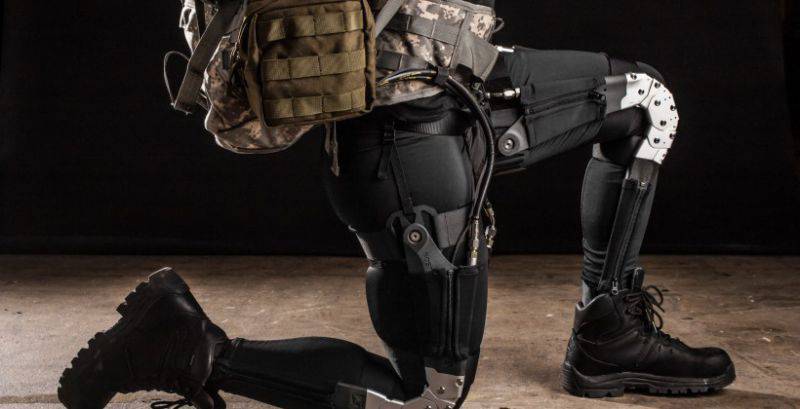
Information